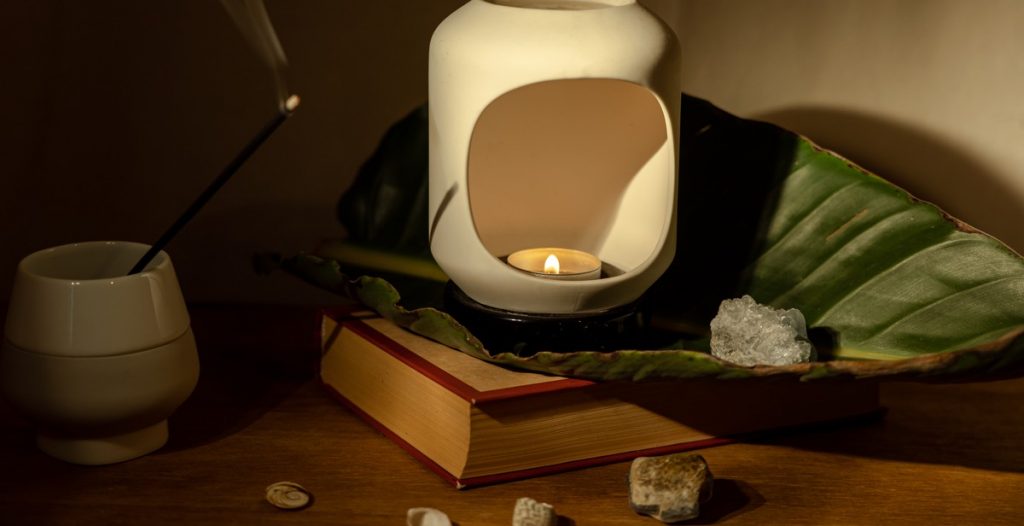How Long Should a Candle Burn For?
Many people love the ambiance and warmth of a burning candle. Whether it’s for meditation or relaxation, candles can create a soothing atmosphere in any room. However, one question that many candle enthusiasts often ask is, “How long should a candle burn for?”
The Importance of Burn Time
The burn time of a candle is important for several reasons. First, it affects the overall lifespan of the candle. If you burn a candle for too long, it may burn down too quickly, leaving you with less burn time overall. On the other hand, if you don’t burn a candle for long enough, it may create a tunnel in the middle, resulting in wasted wax and an uneven burn.
Second, the burn time can also affect the scent throw of the candle. Many candles are designed to release their scent over time, and if you don’t burn them long enough, you may not get the full effect of the fragrance.
Factors That Affect Burn Time
Several factors can affect how long a candle should burn for, including the size of the candle, the type of wax used, and the wick size. In general, larger candles will have a longer burn time than smaller ones. Soy wax candles tend to burn longer than paraffin wax candles, and candles with thicker wicks may also burn for longer periods.
Conclusion
Overall, the ideal burn time for a candle depends on several factors. It’s important to follow the manufacturer’s instructions and to monitor the candle while it’s burning to ensure a safe and even burn. With proper care and attention, you can enjoy the full benefits of a beautifully burning candle for many hours.

Factors that Affect Candle Burning Time
When it comes to candle burning time, several factors come into play. Understanding these factors can help you get the most out of your candles and enjoy their ambiance for longer. Below are some of the factors that affect the burning time of candles:
Type of Wax
The type of wax used to make a candle can significantly affect its burning time. Soy wax, for instance, burns slower and cooler than paraffin wax, resulting in a longer burn time. Beeswax candles also tend to last longer than paraffin candles because they have a higher melting point and burn slower. Additionally, the quality of the wax used can affect the candle’s burn time. High-quality wax tends to burn slower and last longer than low-quality wax.
Size and Shape of the Candle
The size and shape of a candle can also influence its burn time. Generally, larger candles tend to burn for longer periods than smaller ones. However, the shape of the candle can also make a difference. Candles with a wider diameter tend to burn faster than those with a narrower diameter. Similarly, candles with a larger surface area tend to burn faster than those with a smaller surface area.
Wick Type and Size
The type and size of the wick used in a candle can also affect its burn time. A wick that is too small for the candle’s size can result in a shorter burn time, while a wick that is too large can cause the candle to burn too quickly. Choosing the right wick size for your candle can ensure that it burns evenly and for a longer period. Additionally, the type of wick used can also make a difference. Cotton wicks tend to burn slower and last longer than other types of wicks.
Environmental Factors
The environment in which a candle is burned can also affect its burn time. Candles burned in drafty areas tend to burn faster than those burned in still air. Similarly, candles burned in warmer environments tend to melt faster than those burned in cooler environments. It is also important to keep the candle away from any heat sources, such as heaters or direct sunlight, as this can cause the candle to melt too quickly.
Conclusion
Understanding the factors that affect candle burning time can help you choose the right candles for your needs and get the most out of them. Consider the type of wax, size and shape of the candle, wick type and size, and the environmental factors when choosing and burning candles. By doing so, you can enjoy the ambiance and fragrance of your candles for longer periods.

Average Burning Times for Different Types of Candles
When it comes to burning candles, it’s important to know how long you can expect them to last. The burning time of a candle depends on several factors, including the type of wax, the size and shape of the candle, and the environmental conditions in which it is burned. Here are some average burning times for different types of candles:
Tealight Candles
Tealight candles are small, typically cylindrical candles that are designed to burn for a short period of time. On average, a tealight candle will burn for between 3-5 hours. However, the burning time can vary depending on the quality of the candle and the conditions in which it is burned. For example, if the candle is burned in a drafty area, it may burn more quickly.
Votive Candles
Votive candles are slightly larger than tealight candles and are often used in decorative candle holders. On average, a votive candle will burn for between 8-10 hours. However, like tealight candles, the burning time can vary depending on the quality of the candle and the conditions in which it is burned.
Pillar Candles
Pillar candles are cylindrical candles that come in a variety of sizes. The burning time of a pillar candle depends on its size, with larger candles burning for longer periods of time. On average, a 3-inch diameter pillar candle will burn for between 40-60 hours. However, larger pillar candles can burn for up to 100 hours or more.
Taper Candles
Taper candles are long, thin candles that are often used for formal occasions. The burning time of a taper candle depends on its length, with longer candles burning for longer periods of time. On average, a 10-inch taper candle will burn for between 8-10 hours, while a 12-inch taper candle will burn for between 10-12 hours.
Container Candles
Container candles are candles that are poured into a container, such as a jar or tin. The burning time of a container candle depends on its size and the amount of wax that was used to make it. On average, a small container candle will burn for between 20-30 hours, while a larger container candle can burn for up to 60 hours or more.
| Candle Type | Average Burning Time |
|---|---|
| Tealight Candles | 3-5 hours |
| Votive Candles | 8-10 hours |
| Pillar Candles | 40-60 hours |
| Taper Candles | 8-12 hours |
| Container Candles | 20-60 hours or more |
Keep in mind that these are just averages, and the burning time of a candle can vary depending on several factors. To get the most out of your candles, be sure to follow proper burning instructions and take measures to ensure that the candle is burned in a safe and draft-free environment.

Tips for Maximizing Candle Burning Time
If you want to get the most out of your candles, there are several things you can do to maximize their burning time. Here are some tips:
Trim the Wick
- Before lighting your candle, trim the wick to about a quarter of an inch. This will prevent the flame from getting too big and will also help to prevent black soot from forming on the jar or container.
- Trimming the wick regularly will also help the candle to burn evenly and prevent it from tunneling, which can lead to wasted wax and a shorter burn time.
Burn the Candle for the Right Amount of Time
- When you first light your candle, make sure to let it burn long enough to create a full melt pool. This means letting it burn for at least one hour per inch of diameter.
- However, don’t burn your candle for too long. It’s recommended to burn candles for no more than 4 hours at a time to prevent the wick from becoming too long and the candle from overheating.
Avoid Drafts and Airflow
- Candles burn best in still air, so make sure to avoid placing them near open windows, fans, or air conditioners.
- If your candle is burning in a drafty area, it could cause the flame to flicker and burn unevenly, which can lead to a shorter burn time.
Use a Candle Snuffer
- Instead of blowing out your candle, use a candle snuffer to extinguish the flame. This will help to prevent the wick from smoking and will also help to preserve the scent of the candle.
- Blowing out a candle can also cause hot wax to splatter, which can create a mess and shorten the burn time of the candle.
By following these simple tips, you can help to extend the life of your candles and enjoy their scent and ambiance for longer periods of time.



